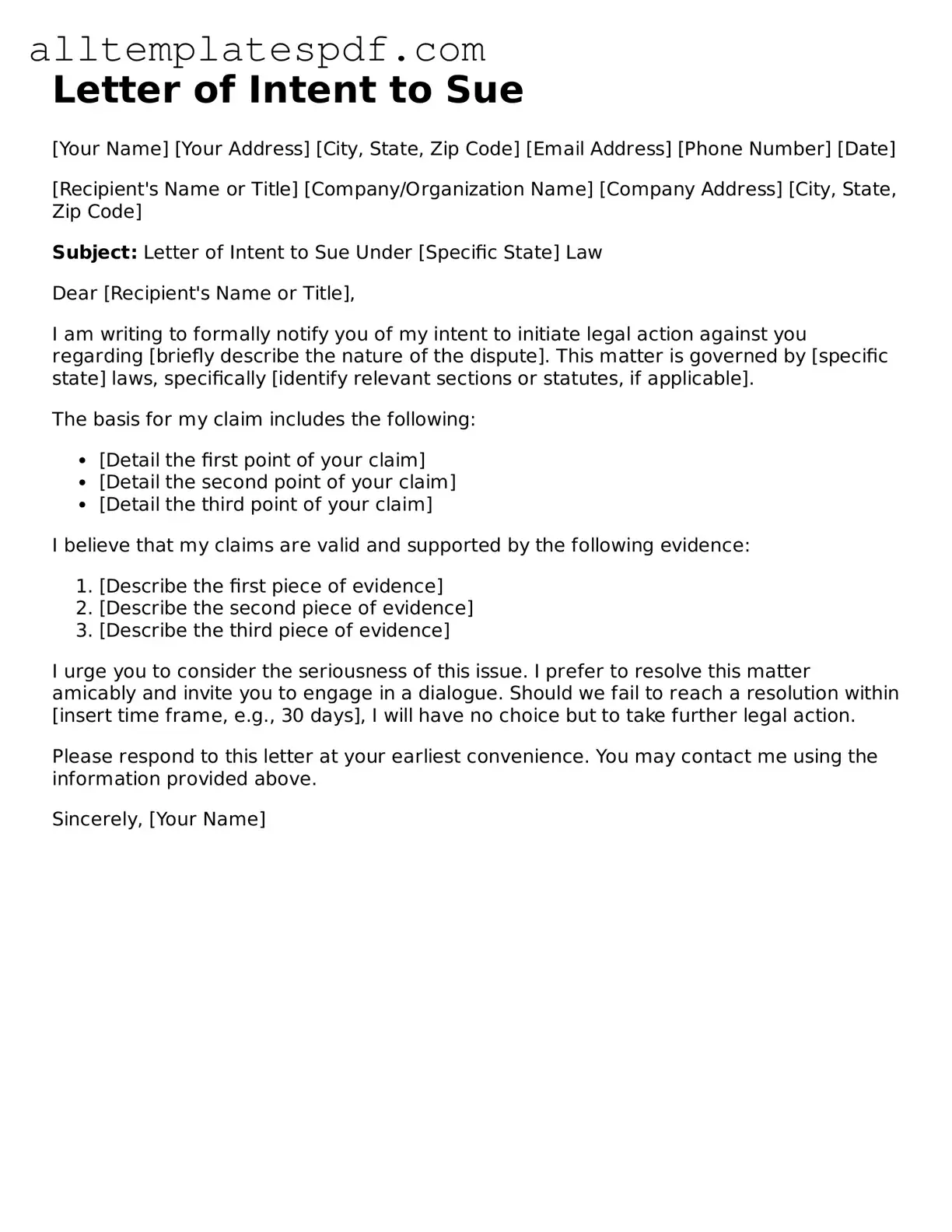Completing a Letter of Intent to Sue form requires careful attention to detail. One common mistake is failing to provide complete contact information. Individuals often overlook including their current address, phone number, and email. This omission can lead to delays in communication and hinder the legal process.
Another frequent error is not clearly stating the facts of the case. People may include vague descriptions or emotional language rather than concise, factual statements. A well-articulated account of events is crucial for establishing the basis of the claim.
Additionally, many individuals neglect to specify the legal grounds for their claim. Without outlining the specific laws or rights that have been violated, the intent to sue may lack the necessary foundation. It is important to clearly connect the facts of the case to applicable legal principles.
Some people also make the mistake of failing to include relevant documentation. Supporting evidence, such as contracts, emails, or photographs, can strengthen the case. Omitting these documents can weaken the argument and make it harder to prove the claim.
Another common pitfall is not adhering to the required format or guidelines. Each jurisdiction may have specific requirements for the Letter of Intent to Sue. Ignoring these guidelines can result in the form being rejected or delayed.
Lastly, individuals often forget to proofread their submissions. Errors in spelling, grammar, or punctuation can detract from the professionalism of the document. A well-prepared letter reflects seriousness and attention to detail, which can influence the perception of the case.
